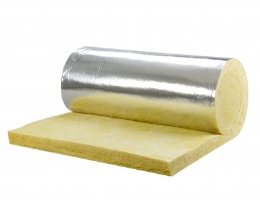RELATED PAGES
Efficiency, Cost & Carbon Comparison - Homemicro article on operating cost and carbon emissionsSizing a Buffer Vessel for use with an ASHP details here
Thermal insulation in buildings
Energy usage in buildings is strongly related to the fabric insulation properties. Heat flows from inside to outside surfaces of the building fabric by the process of conduction. Thermal insulation with good thermal properties reduces this heat flow to a minimum. The heat loss for a surface can be estimated from the following:Q = U × A × (Ti−To)
Where:
| Q: | heat loss (W) |
| U: | the ‘U-value’—the overall thermal conductivity or transmittance (W/m2.K) |
| A: | surface area of the particular fabric (m2) |
| Ti: | the inside temperature (K or °C) |
| To: | the outside temperature (K or °C) |
| UK U-value History: Download a guide to the changes to fabric U-values in the UK. | |
Calculating the required thicknesses for achieving target U-Values
Any required thickness T (in millimetres) can be estimated from the target U-Value U (in W/(m2K)) and the respective material's thermal conductivity k (in W/mK) by using the following formula:T = 1/U × k × 1000
Where:
| T: | thickness (mm) |
| U: | the ‘U-value’—the overall thermal conductivity or transmittance (W/m2.K) |
| k: | the material's thermal conductivity k (W/mK) |
The following table indicates the approximate thickness of various materials to achieve a target U-Value of 0.16 W/(m²K) as required by the 2010 Building Regulations:
| Material | K or Lambda Value (W/mK) | Thickness (mm) |
|---|---|---|
| Rigid polyisocyanurate (PIR) | 0.022 | 138 |
| Expanded Polystyrene (EPS) | 0.035 | 220 |
| Glass mineral wool | 0.044 | 275 |
If the u-value for a roof is 0.16W/(m2K), then 275mm thickness of mineral wool is required as calculated by: Mineral Wool thickness = 1/0.16 x 0.044 x 1000 = 275mm. Note that this is only a quick calculation to assess the approximate insulation thickness and ignores other layers.
Thermal Conductivity & Thermal Resistance
Thermal conductivity (k or lambda value - W/mK) is the capacity of a material to conduct heat, or in the case of an insulating material the capacity to resist heat transfer. It is considered that materials are thermal insulants if their conductivity is less than 0.065 W/mK.The thermal conductivity of a typical mineral fibre product is in the range of 0.034 to 0.044 W/mK, whereas a good rigid phenolic insulation thermal conductivity is in the range of 0.021 to 0.024 W/mK. Therefore for the same thickness phenolic is a better insulator than mineral fibre. Find out more about phenolic insulation
Thermal resistance (R value - m2K/W) is the capacity of a product to resist against heat loss.
A product with a higher R value will perform better as an insulator. The thermal resistance of a specific product can be found by dividing its thickness by the thermal conductivity or if the R value is given, then the thermal conductivity can be calculated by dividing the thickness by the R value. Remember to work in metres not millimetres.
Visit the Energy Saving Trust advice on thermal insulation
Find out more about phenolic insulation
Visit uSwitch for need-to-know information about home insulation
Read the RIBA guide to u-values


